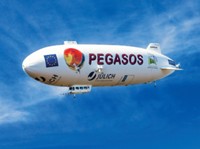Advertisement
Grab your lab coat. Let's get started
Welcome!
Welcome!
Create an account below to get 6 C&EN articles per month, receive newsletters and more - all free.
It seems this is your first time logging in online. Please enter the following information to continue.
As an ACS member you automatically get access to this site. All we need is few more details to create your reading experience.
Not you? Sign in with a different account.
Not you? Sign in with a different account.
ERROR 1
ERROR 1
ERROR 2
ERROR 2
ERROR 2
ERROR 2
ERROR 2
Password and Confirm password must match.
If you have an ACS member number, please enter it here so we can link this account to your membership. (optional)
ERROR 2
ACS values your privacy. By submitting your information, you are gaining access to C&EN and subscribing to our weekly newsletter. We use the information you provide to make your reading experience better, and we will never sell your data to third party members.
Reproducibility
Claims of water turning into hydrogen peroxide spark debate
Latest study on droplets spontaneously forming hydrogen peroxide tackles ozone contamination questions
by Mark Peplow, special to C&EN
May 16, 2022
Researchers have doubled down on a controversial claim that water can spontaneously form hydrogen peroxide (H2O2) by simply being sprayed as micro-sized droplets (J. Am. Chem. Soc. 2022, DOI: 10.1021/jacs.2c02890). Richard Zare, the Stanford University chemist who led the research, says this could potentially provide a cheap route to the H2O2 that’s ubiquitous in hospitals, laboratories, and medicine cabinets.
It’s the latest in a series of studies from Zare, who first reported this effect back in 2019 (Proc. Natl. Acad. Sci. U.S.A., DOI: 10.1073/pnas.1911883116). The discovery was a huge surprise, he says, because it suggested that some special property of the microdroplets was triggering a chemical process not seen in bulk water.
Zare’s earlier studies detected micromolar concentrations of H2O2 when dry air or nitrogen nebulized water into droplets less than 20 µm wide. The concentration of H2O2 increased as the droplets got smaller, down to a size of 1 µm. The researchers used no voltage and added no catalyst. They also ruled out friction or ambient light as the cause. Zare thinks that a strong electric field, formed naturally at the periphery of the droplet, could be converting hydroxide anions already in the water to hydroxyl radicals that combine to make H2O2.
Zare says the peroxide-loaded microdroplets can be used to carry out organic reactions, and they can also kill more than 90% of bacteria on surfaces (Chem. Sci. 2019, DOI: 10.1039/C9SC05112K; QRB Discovery 2020, DOI: 10.1017/qrd.2020.2). “It’s not as good as bleach, but I think it’s quite effective,” Zare says. He also suggests that the presence of H2O2 in microdroplets may explain the seasonal variation in viral respiratory infections (Mol. Front. J. 2021, DOI: 10.1142/S252973252140006X).
But when Himanshu Mishra’s team at King Abdullah University of Science and Technology repeated Zare’s experiments, they could only produce H2O2 in microdroplets when the surrounding air contained ozone. Ozone decomposition in water can generate H2O2, and Mishra, who studies the physical chemistry of water, suggested that higher levels of atmospheric ozone in California might have caused Zare’s original results (Chem. Sci. 2022, DOI: 10.1039/d1sc06465g).
Zare’s latest paper is largely a response to Mishra’s work. “I want to give them credit; they really show that ozone can produce hydrogen peroxide,” he says. “What I wanted to point out in this paper is that it’s not the only way to produce hydrogen peroxide.” Even when Zare’s team used ultrapure nitrogen and an ozone scrubber in their experiments, the microdroplets contained up to 1.5 µM H2O2. However, this is significantly lower than the 30 µM concentration reported in the 2019 study, and Zare now acknowledges that “there may well have been contributions from ozone or O2” in the earlier work.
The original paper also reported that using pure oxygen as the nebulizing gas reduced the concentration of H2O2; in the new paper, using oxygen actually increased the H2O2 concentration fourfold compared to nitrogen. “I don’t know where that mistake came from,” Zare says.
Mishra remains unconvinced that H2O2 is formed spontaneously. “If true, this would really require us to rewrite lots of physical chemistry textbooks,” he says. Mishra points out that water naturally contains nanomolar concentrations of H2O2, which can be generated by ultraviolet light, for example. His experiments show that these traces can be concentrated to low micromolar levels during nebulization, because water evaporates from the droplets more readily than H2O2 does.
Meanwhile, Zare is continuing to study the effect and has more papers in the works. To those still expressing skepticism, he says: “Try to reproduce what we’ve done, and I think you’ll succeed in seeing that it’s true.”




Join the conversation
Contact the reporter
Submit a Letter to the Editor for publication
Engage with us on Twitter